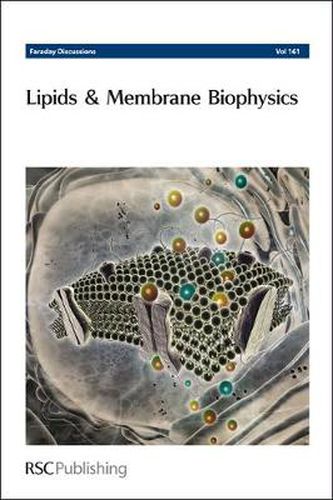Readings Newsletter
Become a Readings Member to make your shopping experience even easier.
Sign in or sign up for free!
You’re not far away from qualifying for FREE standard shipping within Australia
You’ve qualified for FREE standard shipping within Australia
The cart is loading…






One of the key challenges in biophysics and chemical biology is gaining an understanding of the underlying physico-chemical basis of the highly complex structure and properties of biomembranes. It used to be thought that the lipid component played a mainly passive role, simply acting as a self-assembled bilayer matrix within which the active protein components functioned. However, it has now become clear that there is a intimate two-way interplay between the lipid and the protein components in determining membrane structure, organization and dynamics, and that lipids play many active roles in biological function. Concepts such as lateral segregation and domain formation, lateral pressure, curvature and curvature elasticity have attracted enormous interest in recent years, although their validity when applied to real biomembranes remains unclear or even obscure. This Faraday Discussion considered recent developments in the study of biomembrane structure, ordering and dynamics, with particular emphasis on the roles of lipids in these phenomena. As well as discussing new experimental and theoretical findings and novel methodologies, the meeting focused on exploring the relevance of concepts from amphiphile self-assembly and soft matter physics to understanding biomembranes.
$9.00 standard shipping within Australia
FREE standard shipping within Australia for orders over $100.00
Express & International shipping calculated at checkout
One of the key challenges in biophysics and chemical biology is gaining an understanding of the underlying physico-chemical basis of the highly complex structure and properties of biomembranes. It used to be thought that the lipid component played a mainly passive role, simply acting as a self-assembled bilayer matrix within which the active protein components functioned. However, it has now become clear that there is a intimate two-way interplay between the lipid and the protein components in determining membrane structure, organization and dynamics, and that lipids play many active roles in biological function. Concepts such as lateral segregation and domain formation, lateral pressure, curvature and curvature elasticity have attracted enormous interest in recent years, although their validity when applied to real biomembranes remains unclear or even obscure. This Faraday Discussion considered recent developments in the study of biomembrane structure, ordering and dynamics, with particular emphasis on the roles of lipids in these phenomena. As well as discussing new experimental and theoretical findings and novel methodologies, the meeting focused on exploring the relevance of concepts from amphiphile self-assembly and soft matter physics to understanding biomembranes.